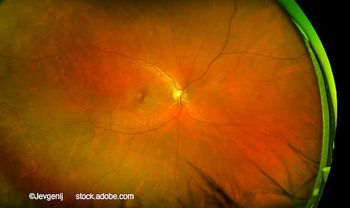
VA high quality, complications low with phakic IOL
Surgeons reviewing their outcomes with an implantable contact lens (Visian Implantable Collamer Lens, STAAR Surgical Co.) reported high-quality visual acuity results and low complication rates over both short-term and long-term follow-up periods.
Key Points
The ICL discussed provides excellent visual results for correction of myopia in healthy eyes and also benefits patients with keratoconus, said Brian S. Boxer Wachler, MD, Boxer Wachler Vision Institute, Beverly Hills, CA. He presented results with the lens in a sequential series of patients, both in healthy eyes and those that had keratoconus, since the implant received FDA approval in late 2005.
"This lens certainly has the ability to produce extremely high-quality vision because it's flirting with the nodal point. It has the potential to be extremely accurate despite high myopia levels of correction," he said. "The use in keratoconus is going to continue as more cases are done showing that it results in significant improvements in best-corrected vision."
"We can potentially get higher-quality vision by moving closer to the nodal point," he said. "Especially in a keratoconic eye, if we put the myopia correction behind the distorted, abnormal, keratoconus cornea, maybe we have an even greater benefit by being closer to the nodal point in those patients."
The post-FDA series Dr. Boxer Wachler described included 31 eyes in healthy patients; their average age was 38 years, and their average myopia was about 11 D, with a range of 3.5 D (this patient had forme fruste keratoconus) to –19 D. All patients had more than 1 month of follow-up.
The cohort also included five eyes with keratoconus and with similar demographics. Most cases were performed bilaterally with separate drape and gown for each eye.
Results in the healthy-eye group showed that uncorrected monocular visual acuity was 20/20 in 44% of eyes and 20/16 in 8% of them. Binocular vision results: 20/20, 80%; 20/25 or better, 100%; and 20/16, 20%. All patients had preoperative best spectacle-corrected visual acuity (BSCVA) of 20/25 or better.
Most patients had no change in best-corrected visual acuity (BCVA), and none lost 1 line or more; 26% gained at least 1 line of vision.
Outcomes also indicate that the procedure was highly accurate; the mean correction was about 0.4 ± 0.39 D, and the mean standard deviation was about 0.4 D as well. Several of the eyes with keratoconus also gained BCVA, which reaffirms the idea that working close to the nodal point will improve visual acuity, although in this group residual refractive error will remain, Dr. Boxer Wachler said.
Complications are possible with any intraocular procedure, he noted, but in this series no cataracts, increases in IOP, pupillary block, pigment dispersion, infection, non-patent peripheral iridectomy, or re-operations were seen.
Newsletter
Don’t miss out—get Ophthalmology Times updates on the latest clinical advancements and expert interviews, straight to your inbox.



















































.png)


